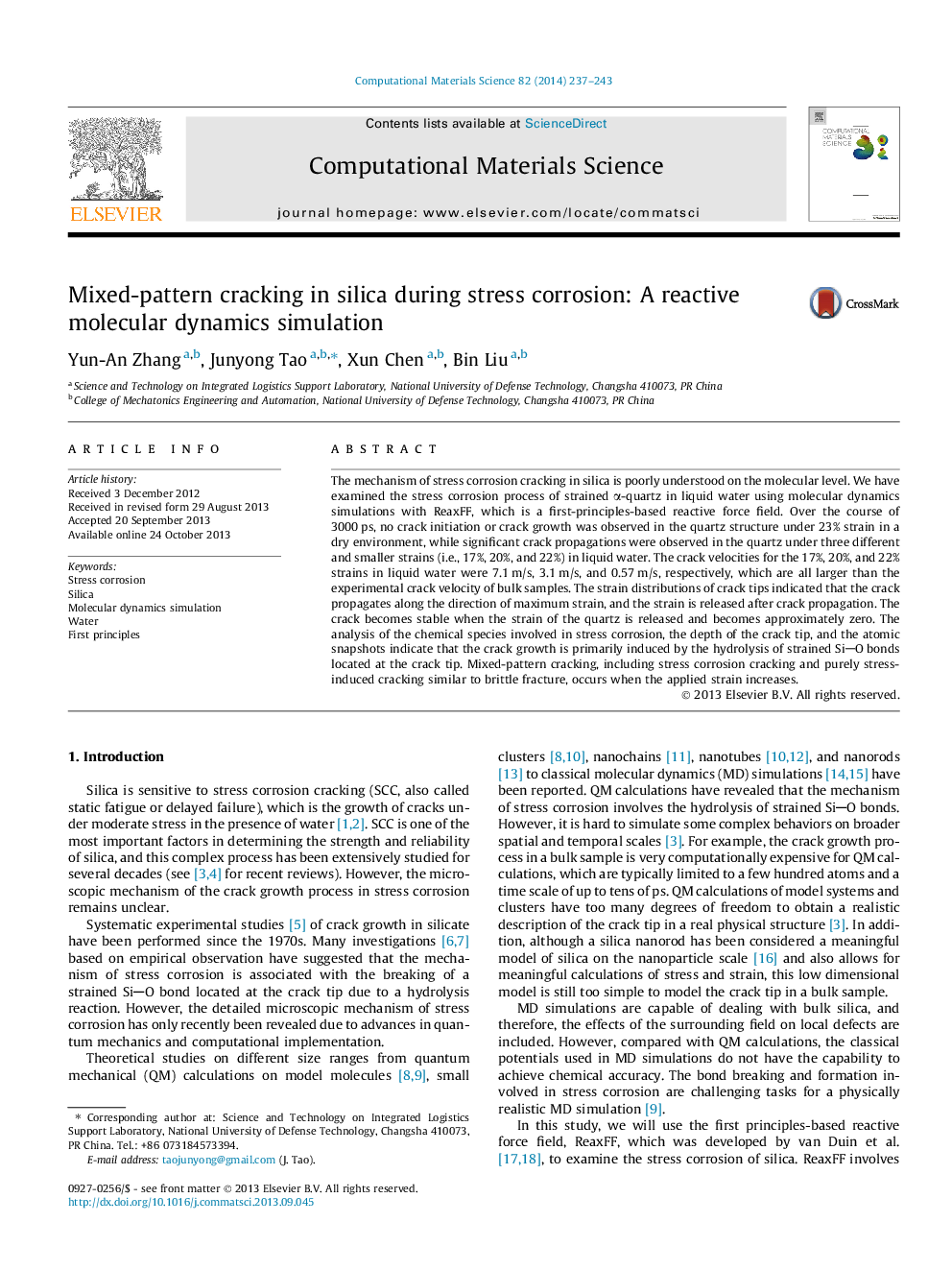| Article ID | Journal | Published Year | Pages | File Type |
|---|---|---|---|---|
| 7961062 | Computational Materials Science | 2014 | 7 Pages |
Abstract
The mechanism of stress corrosion cracking in silica is poorly understood on the molecular level. We have examined the stress corrosion process of strained α-quartz in liquid water using molecular dynamics simulations with ReaxFF, which is a first-principles-based reactive force field. Over the course of 3000 ps, no crack initiation or crack growth was observed in the quartz structure under 23% strain in a dry environment, while significant crack propagations were observed in the quartz under three different and smaller strains (i.e., 17%, 20%, and 22%) in liquid water. The crack velocities for the 17%, 20%, and 22% strains in liquid water were 7.1 m/s, 3.1 m/s, and 0.57 m/s, respectively, which are all larger than the experimental crack velocity of bulk samples. The strain distributions of crack tips indicated that the crack propagates along the direction of maximum strain, and the strain is released after crack propagation. The crack becomes stable when the strain of the quartz is released and becomes approximately zero. The analysis of the chemical species involved in stress corrosion, the depth of the crack tip, and the atomic snapshots indicate that the crack growth is primarily induced by the hydrolysis of strained SiO bonds located at the crack tip. Mixed-pattern cracking, including stress corrosion cracking and purely stress-induced cracking similar to brittle fracture, occurs when the applied strain increases.
Related Topics
Physical Sciences and Engineering
Engineering
Computational Mechanics
Authors
Yun-An Zhang, Junyong Tao, Xun Chen, Bin Liu,
